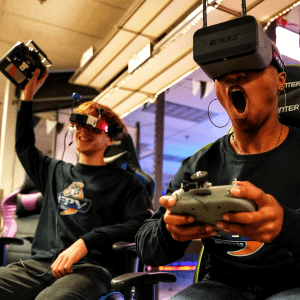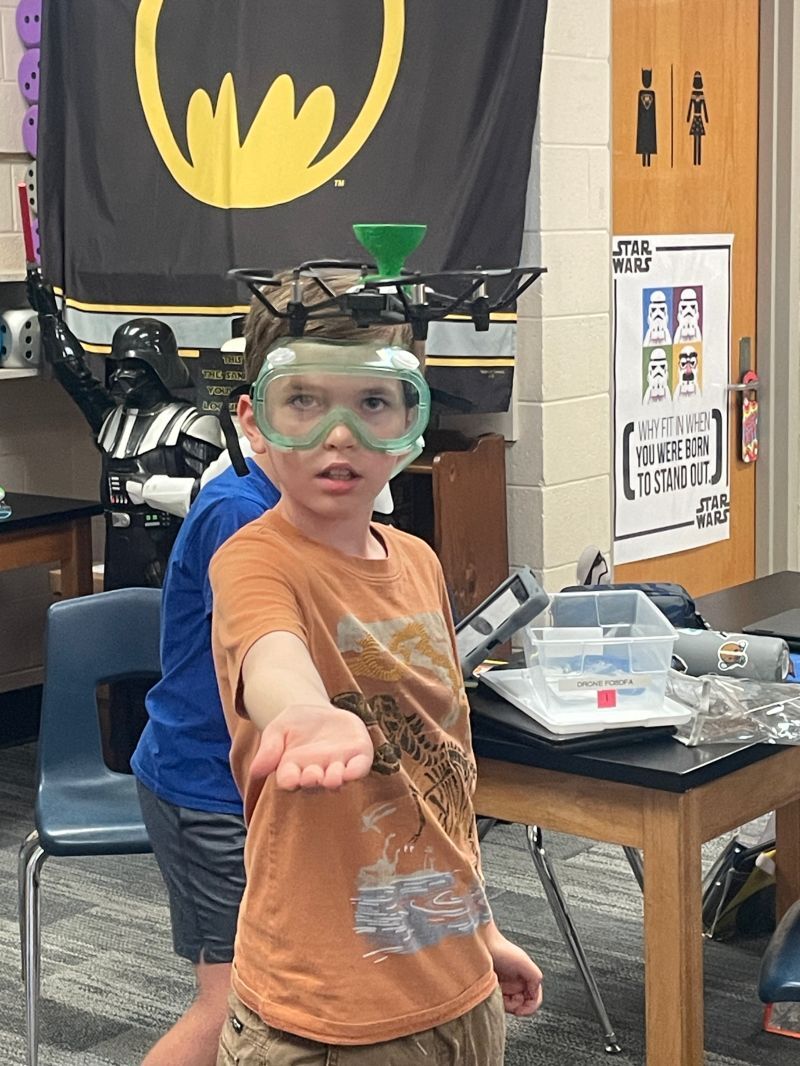Law enforcement agencies have a history of embracing cutting-edge technologies.
From fingerprints and DNA evidence to machine learning and artificial intelligence, police departments use advanced tools to keep our world safe.
Drone technology is always getting better, making it more affordable and effective for all types of uses. The police, fire departments, and emergency services now use drones to provide life-saving assistance in the field.
Let’s discover more about the different ways police use drones.
Curious about who’s going to be flying drones in the future? The students in our classrooms today! And Drone Legends is here to make it possible. Learn more about our programs here.
How Do the Police Use Drones?
A drone’s ability to provide a bird’s eye view of a situation, combined with impressive mobility, makes the technology ideally suited for use in scenarios like these:
Disaster Response
The aftermath of a fire, flood, mudslide, earthquake, or any other type of natural disaster can leave public safety agencies scrambling to assess the situation.
Impassable roads and damage to bridges and other critical infrastructure can make it nearly impossible for agencies to identify areas of concern and get help to where it’s needed most.
Drones can provide an aerial assessment of a disaster’s impact on a community and help law enforcement and rescue agencies fast-track solutions for deliveries and aid.
Search and Rescue
Time is always in short supply in search and rescue missions. The longer an injured or lost person is lost, the greater the risk.
Police have a history of successfully using drones to reduce search times and locate lost individuals.
This summer, a drone was able to locate and help rescue an 83-year-old man who’d wandered away from home after he’d been missing for eight hours.
Drones can also provide life-saving aid. In July, a lifeguard drone in Spain saved a 14-year-old boy at risk of drowning. After the tide pulled the boy out into the ocean, the drone dropped him a life vest so he could stay afloat until brought back to shore.
Capturing Wanted Individuals
Serving an arrest warrant can escalate into a dangerous situation if the individual resists arrest. Suspects can be dangerous to the public when trying to avoid capture, making it vital for the police to make a timely arrest.
The Chester County sheriff’s office used a drone to capture a suspect who fled police officers at a traffic stop. The drone provided aerial reconnaissance of the suspect’s location, where he was apprehended.
Crowd Monitoring and Surveillance
Monitoring large crowds presents several logistical challenges for law enforcement agencies to overcome.
Successfully surveilling a big crowd of hundreds or thousands of people requires an increased law enforcement presence. Unfortunately, police departments don’t always have enough personnel to cover such massive crowds. This makes it challenging to identify areas needing support to provide aid and assistance.
Drones enable police to keep an eye on gatherings from a safe distance without requiring more officers on the ground.
Crime Scene Investigation
Police departments use drones to capture aerial photos of crime scenes, gather evidence, and piece together vital information needed to help solve cases.
With 3D modeling, drones can help to create virtual tours of crime scenes that aid in the investigation while providing prosecutors with more extensive evidence to use in jury trials.
Obstacles to Police Using Drones
Even as drone technology becomes more commonly accepted by law enforcement agencies, police departments still have a few hurdles to overcome to make it easier for the technology to become part of daily policing.
FAA Regulations
The Federal Aviation Administration (FAA) regulates the use of all aircraft, including unmanned aerial vehicles (UAVs) like drones.
Some FAA regulations present challenges to police departments looking to expand their drone programs.
- Beyond Visual Line of Sight (BVLOS) requires drone pilots to always maintain a clear line of sight of the aircraft, which can limit police use. The FAA has launched pilot programs with police departments to determine strategies for safely deploying drones in areas where pilots may lose line of sight or when operating near airports.
- The FAA also requires unmanned vehicles be equipped with Detect and Avoidance (DAA) technology. These systems allow UAVs to operate safely by avoiding collisions with buildings, birds, power lines, and other obstacles.
Active sensors use real-time flight information to provide pilots with accurate distance measurements to nearby obstacles using radar and ultrasound. As this technology improves, drones can begin to operate safely beyond the operator’s sight.
Limited Battery Life
Current battery technology limits how long a drone can continuously stay in the air without recharging. The average flight time for most professional UAVs is 30-60 minutes.
This limited flight time reduces police departments’ practical applications for drones.
Monitoring traffic, photographing accidents, and assisting in day-to-day police activities require drones to either stay in the air longer or have the ability to recharge quickly while out in the field.
The U.S Border Patrol is currently testing drones equipped with built-in wireless electrification line (E-line) battery charging systems. Instead of docking at charging stations, E-line batteries enable drones to recharge in the air.
Privacy Concerns
Drone technology has the power to change the world for the better, but it also needs to be used responsibly.
To address privacy concerns, police departments have committed to working with community leaders and organizations like the ACLU.
At least 44 states have enacted laws to address how drones are used in public spaces, and 18 states require police to obtain a warrant before using a UAV in a criminal investigation.
The Future of Drones and Policing
Drone technology provides police departments with a great tool that can save lives while keeping police officers and the public safe. From monitoring traffic accidents to crowd control to helping find lost hikers and much much more, drones and police work will improve as the technology advances.
At Drone Legends, we believe that drones play a significant role in building communities around the world. And the drone pilots of tomorrow may be sitting in a classroom today, ready to learn how to fly.
Want to invest in the Legends of tomorrow? Learn about getting Drone Legends into your school, after school program, club, camp, and more! Tap or click here to check it out!




